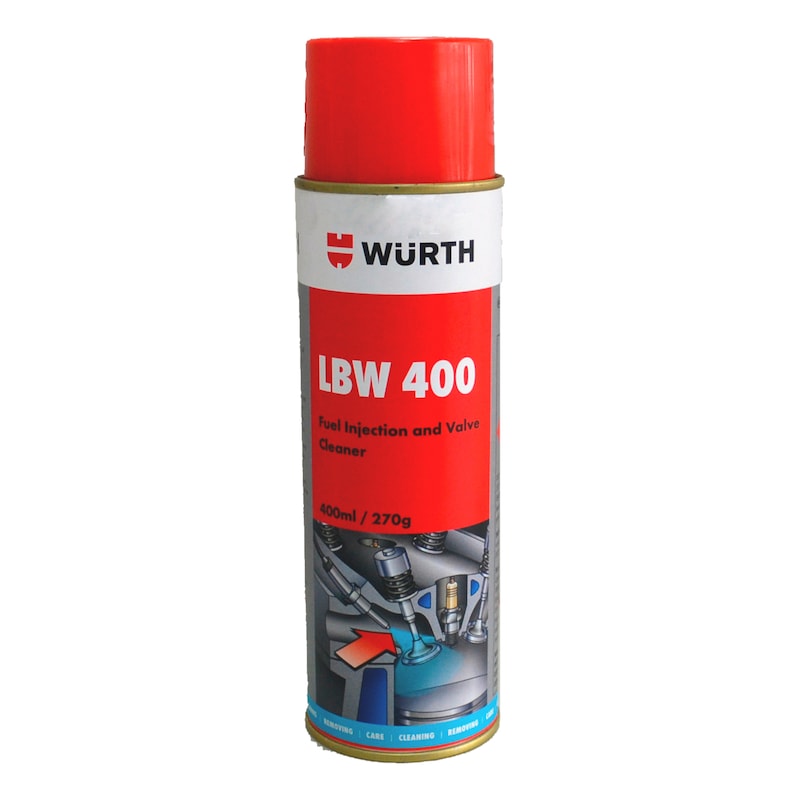Petrol fuel injection valve cleaner LBW 400
System cleaner petrol for car
SYSCLNR-VEH-LBW400-330ML
Register now and access more than 125,000 products
The LBW 400 fluid will remove all traces of oil, grease and carbon residues from the intake system. As the cleaning fluid is delivered by the vehicle’s own injection system the cleaning process is targeted toward components of the engine that will directly benefit. The intake valves are cleaned to help achieve and maintain a smooth idle and a consistent delivery of power and torque, while the freshly cleaned injectors help to deliver all of this power economically. The benefits to the vehicle owner are greater fuel economy and more useable power and because the repairer is able to deliver these improvements instantly with the LBW400 system, it is easier to recover the costs effectively.
- Optimises engine power
- Reduces fuel consumption
- Improves exhaust emissions
One can is suitable for a single vehicle application.
Datasheets(X)
Preparation:
To correctly service 1 x petrol engine vehicle, you need to have the following items ready:
1. A single can of Petrol fuel injection valve cleaner LBW 400 and Throttle valve cleaner .
2. Wurth On-Car Service tool kit .
3. Personal Protection Equipment as detailed in the MSDS.
Connecting the Wurth On-Car Service tool to a vehicle:
1. Ensure the vehicle is at operating temperature.
2. Switch off the engine.
3. Disconnect power to the fuel pump. If this is not possible, make sure that the outlet hose / pipe from the vehicle fuel pump has been safely blocked off or routed back to the fuel tank.
4. Using an absorbent cloth to capture any fuel, disconnect the main fuel inlet line (usually at or near the fuel rail) and select the appropriate connection from the Wurth On-Car Service kit.
5. Connect the hose from the Wurth On-Car Service kit’s ‘pressure regulator’ unit to the selected adaptor and then connect the selected adaptor to the fuel inlet hose / fitting on the vehicle.
6. Screw the LBW 400 can onto the fitting on the bottom of the regulator unit.
7. Invert and place the can of LBW 400 into the can hanger and position both in a suitable location on the underside of the bonnet. (Make sure the bonnet is able to support the weight of the can and equipment. If not, support the bonnet mechanically).
8. Then, open the regulator valve until the required fuel pressure (commonly 3.0 bar) is indicated on the gauge.
9. Start the vehicle and allow the engine to run. When the contents of the LBW 400 can are fully expelled, the engine will stop.
Disconnecting the Wurth On-Car Service tool from a vehicle:
1. Close the valve on the pressure regulator assembly.
2. Disconnect the adaptor from the vehicle fuel inlet, taking care to avoid fuel spillage.
3. Reconnect the vehicle’s fuel inlet hose to the fuel inlet fitting.
4. With the end of the adaptor hose pointed away from the hot engine and towards a suitable receptacle, open the valve to purge any remaining line pressure / fluid.
5. It is now safe to disconnect the LBW 400 can from the can adaptor.
6. Disconnect all other adaptor lines etc and replace into the Service kit.
7. Check over all vehicle fuel line connectors to ensure that there are no leaks.
Contents | 330 ml |
Colour | Colourless |
Smell/fragrance | Characteristic |
Chemical basis | Xylene |
Shelf life from production | 24 Month |
Density | 0.67 g/l |
Density conditions | at 20°C |
Min. flashing point | 60 °C |


















